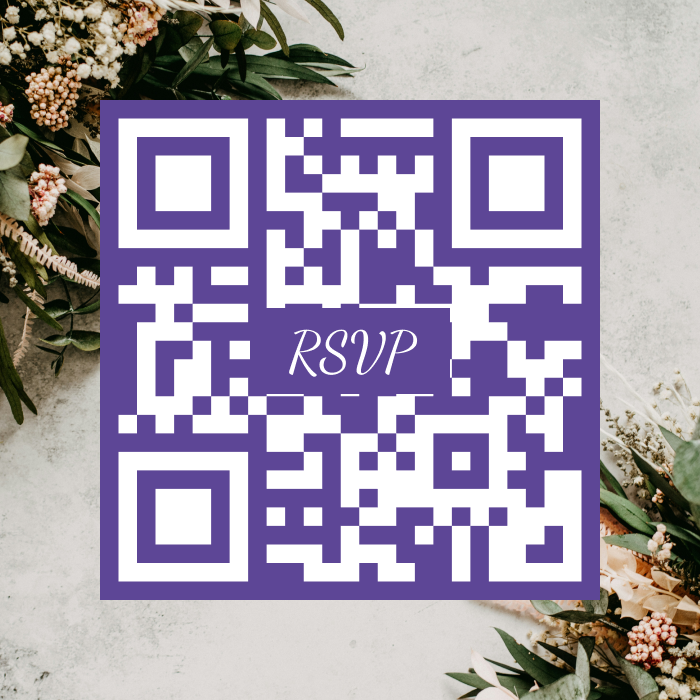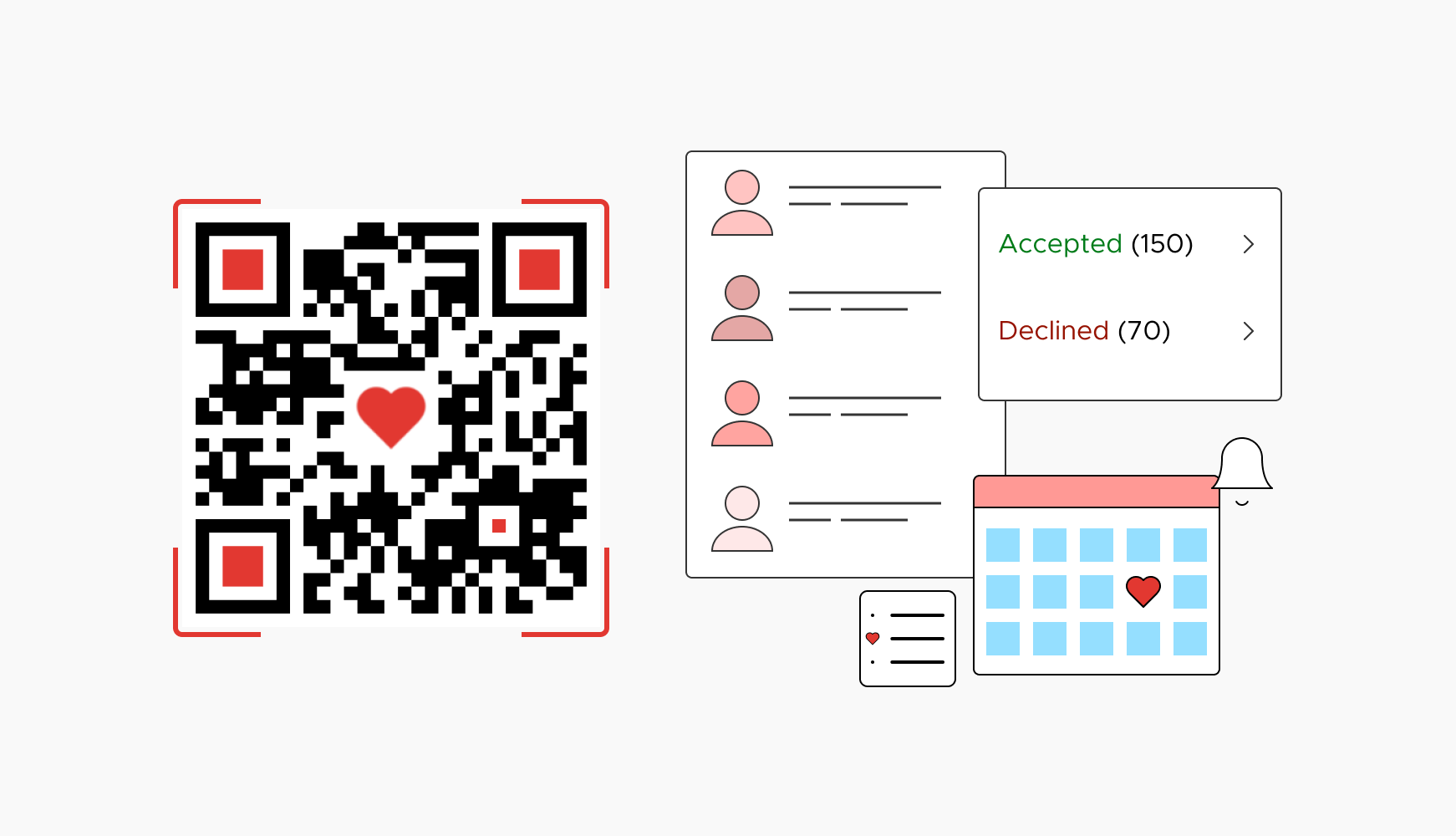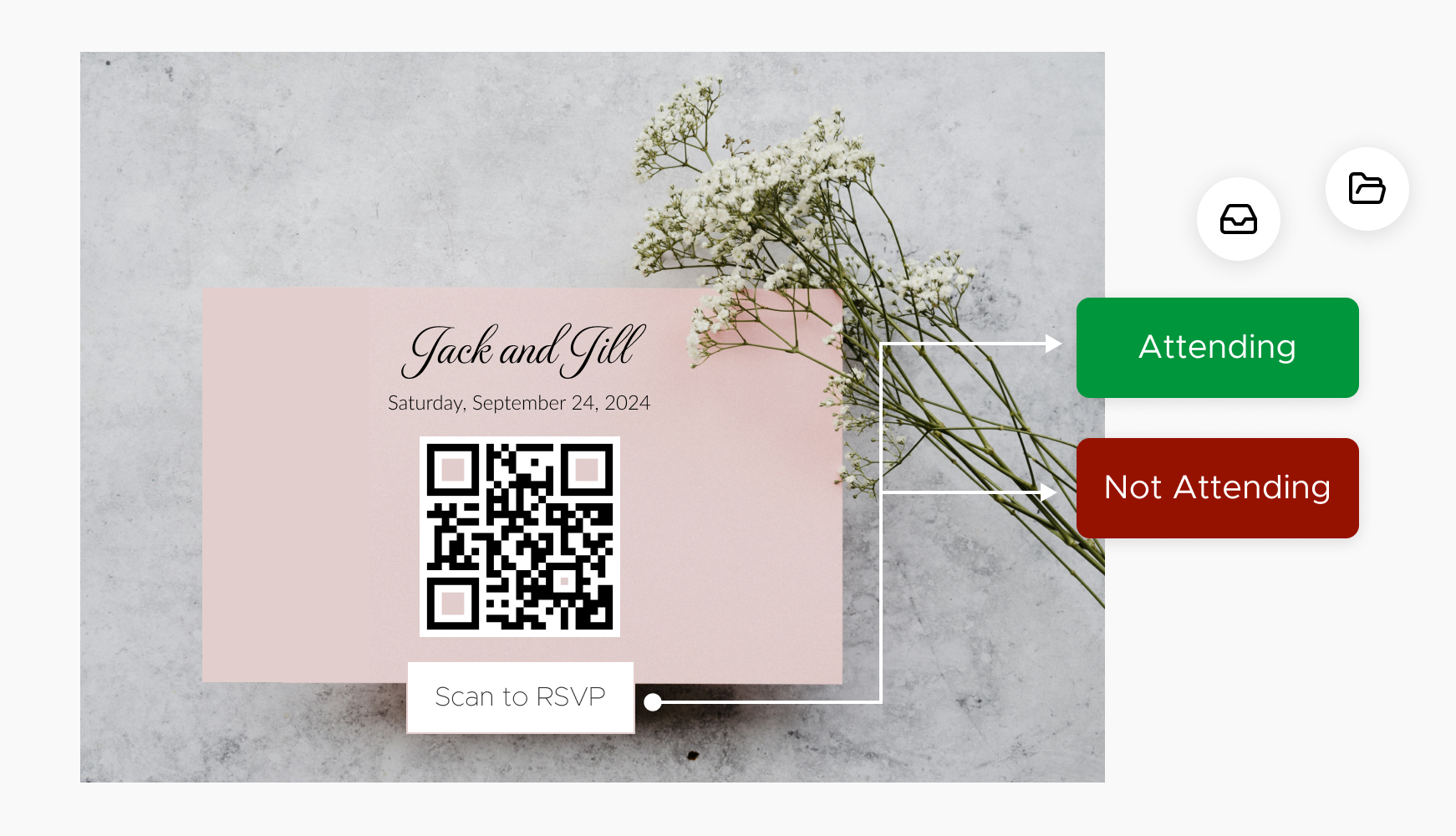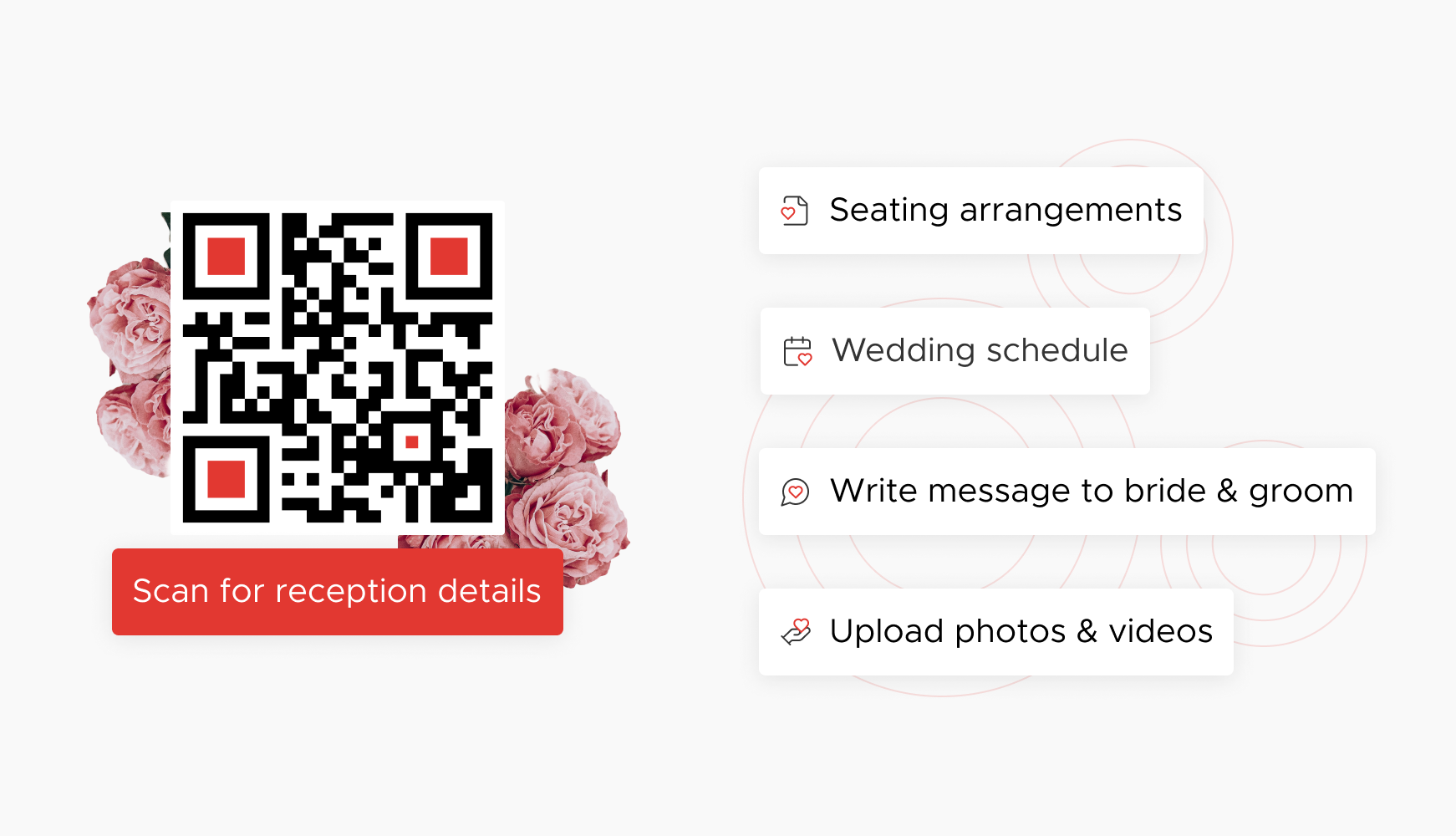Simplify your wedding RSVP process with QR codes. Traditional methods can be time-consuming and error-prone, leading to misplaced responses and incomplete guest lists. By adding a QR code to your invitations, save-the-date cards, or wedding website, you can streamline the RSVP process, ensuring all guest responses are instantly collected and organized in one place.


Using a Wedding RSVP QR code streamlines collecting responses from your guests by linking them directly to an online RSVP form. When guests scan the QR code with their smartphones, they are instantly taken to the form where they can confirm their attendance. This ensures all responses are centralized and easily accessible, eliminating the need to sort through physical RSVPs.
The centralized system allows for easy tracking and management, making it simple to see who has responded and who hasn't. This saves time and reduces the risk of lost or misplaced responses, ensuring you have an accurate guest list as you plan your big day.
One of the key benefits of using Wedding RSVP QR codes is receiving real-time updates. As soon as a guest submits their RSVP, you get an instant notification, allowing you to keep an up-to-date count of attendees. This is particularly useful for timely arrangements like finalizing catering, seating plans, and accommodations.
Real-time updates also help you quickly identify and follow up with guests who haven't responded, ensuring you have a complete guest list well before the event. This instant feedback loop helps avoid last-minute surprises and ensures a smoother planning process.

Incorporating QR codes for wedding RSVPs reduces the need for physical cards and postage, making your wedding planning more eco-friendly. Traditional paper RSVPs generate waste and require resources for printing and mailing.
By using QR codes, you cut down on these needs, lowering your wedding's carbon footprint. This sustainable approach aligns with modern practices and appeals to environmentally conscious guests. Additionally, going paperless saves costs associated with printing and postage.
Wedding RSVP QR codes allow you to gather more than just a yes or no. The linked online form can collect details like meal preferences, song requests, dietary restrictions, and special needs. This customization ensures you cater to your guests' preferences, enhancing their experience.
Having this information collected digitally makes it easy to sort and analyze, helping you plan every detail of your event with precision. This approach goes beyond traditional RSVPs, giving you a comprehensive understanding of your guests' needs.
Ready to discover how QR codes can transform your event?
Start by creating your custom QR Code today

Embedding a QR code on your wedding invitations is a modern way to direct guests to an online RSVP form. Guests can easily respond with a quick smartphone scan. The QR code can be designed to match your invitation's aesthetic, blending seamlessly with your wedding theme. This approach centralizes responses, reduces the risk of lost RSVPs, and makes managing your guest list more efficient and accurate.
Real estate agents can use QR codes on property listings to provide potential buyers comprehensive brochures. For instance, a QR code on the property's info sheet at an open house could link to a PDF brochure that includes high-quality photos, floor plans, neighborhood details, and pricing information. This allows visitors to take a digital brochure with them, which they can review later, making the property details more accessible and memorable.
Featuring a QR code on the couple’s wedding website is an effective way to guide guests to the RSVP section effortlessly. Many couples create wedding websites to provide comprehensive details about their big day, including schedules, venue information, and registries. By adding a QR code, you streamline the process for guests to confirm their attendance without navigating through multiple pages. This convenience can be particularly beneficial for older guests who may not be as tech-savvy, making the RSVP process as straightforward as possible.

Enhance the guest experience by placing QR codes on reception tables or programs. Guests can confirm last-minute attendance, provide feedback, or access wedding highlights and message boards. QR codes on tables can quickly check meal preferences or special requests, ensuring accurate catering. This use of QR codes facilitates smooth event management and adds an interactive, modern touch to your wedding.
Select a reliable QR code generator like QRStuff, which offers a range of features to create dynamic and customizable QR codes suited for your business needs.
Ready to discover how QR codes can transform your event?
Start by creating your custom QR Code today
Select the appropriate type of QR code for your needs, such as a URL QR code that links directly to your wedding site.

Add customization to your QR code, such as your server's logo, colors, or other branding elements, to make it visually appealing and recognizable.

Before distributing your QR code, test it with multiple devices to ensure it works correctly and directs users to the intended place.

Print your QR code on various materials such as flyers, posters, business cards, or merchandise to make it easily accessible to your target audience.

Use QRStuff’s dashboard to track the performance of your QR codes. Collect feedback and measure the success of each code, allowing you to optimize their use and improve customer engagement.

Place the QR code in a visible, accessible spot on invitations and other materials. Ideal locations include the bottom or side of the invitation card or save-the-date cards. Clear placement avoids confusion and encourages guests to use the QR code, streamlining the RSVP process.
Include a brief explanation or visual guide on how to scan the QR code. Simple instructions like "Scan this QR code with your smartphone camera to RSVP" can be very helpful. A small graphic or icon indicating the scanning process can assist less tech-savvy guests.
Use high-resolution images for the QR code to ensure it scans easily. Poor print quality can cause scanning issues and missed RSVPs. Ensure the QR code is sharp and clear, avoiding distortion. Consider professional printing services to maintain functionality and aesthetic appeal.
Link the QR code to a mobile-friendly RSVP form. Most guests will scan the QR code using their mobile devices, so the form should be optimized for mobile viewing. A responsive design ensures the form is easy to navigate, fill out, and submit, reducing any potential barriers to completing the RSVP process.
Yes, you can create Wedding RSVP QR codes using our free QR code generator. For some QR Code types, our free version supports basic QR code creation. For advanced features, such as branding or analytics, a subscription is required.
A subscription unlocks advanced features tailored to Wedding RSVP QR Codes, including dynamic QR codes for real-time updates, detailed scan analytics to track user engagement, and customization tools to align QR codes with your branding. These features enhance functionality, improve user experiences, and streamline your workflows. See the full list of features associated with each subscription here.
You can reach out to us at support@qrstuff.com for assistance. Free users receive email support with responses typically provided within 12–24 hours. Subscribers enjoy priority support via email, phone, or live chat for faster resolutions. To help us assist you efficiently, please include your account details, QR code ID, and a brief description of the issue when contacting support.